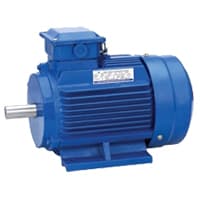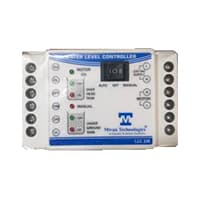Water Level Controller Wiring:
This diagram shows how to make water level controller wiring. In this circuit, we use a water pump motor, water level sensors, a water tank, and a water level controller. First, we need to connect the water pump with the water level controller, then connect the tank with the sensor. Now this circuit is ready for use. If you want to know more about this circuit please stay with our youtube video below the post.
Advertisements
Components needed For this Project:
You can get the components from any of the sites below:
*Please note: These are affiliate links. I may make a commission if you buy the components through these links. I would appreciate your support in this way!
Advertisements
Components used to make the Water Level Controller Wiring:
A Single-Phase Motor is an Electrically-Powered Rotary Machine That Can Turn Electric Energy into Mechanical Energy. It Works by Using a Single-Phase Power Supply. Single-phase Motors Are Used in Equipment And Machines That Are Smaller in Size And Require Lower Horsepower. This Includes Equipment Such As Refrigerators, Pumps, Compressors, Fans, and Portable Drills. Single-phase motors Have a Similar Construction to The 3-phase Motor, Including an AC Winding That is Placed on The Stator And Short-Circuited Conductors That are Placed in a Cylindrical Rotor.
02. Water Level Controller:
A Water Level Controller Helps Save Money by Limiting The Waste of Water and Electricity circuit diagram. These Devices Accurately Regulate how Much Energy is Used to Protect Against any Unnecessary Water/Electricity Usage. Water Level Controllers That Automatically Adjust The Water Level save Energy. They do it by Automatically Turning off the Motor When the Tank is full and When There is no Water Flow to The Tank. This Means That less Water and Energy are Utilized to Control a Water Supply.
Thank You for visiting the website. Keep visiting for more Updates.
Frequently asked questions
A water level controller helps save money by limiting the waste of water or electricity. These devices accurately regulate how much energy is used to protect against unnecessary water/electricity usage. Over time then the money saved is quite substantial.
The water level controller circuit diagram is built around IC 555 (IC2) to monitor the water level in the overhead tank and the 'on'/'off' status of the motor through the inverter and driver circuits. The transistor of the switch circuitry monitors the flow of water and raises an alarm if the pump runs dry.
Five-core wires are used for connecting overhead tank water level sensors from the water tank to the water level indicator. All the wires have different colors so as to avoid any kind of confusion in the connections. This wire is used for extending the sensor wire from the water tank to the Automatic water level controller.
That means trigger pin two and reset pin four of IC1 are connected to ground and 12V, respectively. This triggers IC1 or its output goes high to energize relay RL1 through driver transistor SL100 (T1). The pump motor is switched on or it starts pumping water into the overhead tank if switch S3 is 'on.
Electronic water level circuit diagrams have the capability of alerting if there is a water leak somewhere in the factory. When the water level is too high and too low or exceeds the higher limit, it could detect the water level easily by hearing an alarm sound and from different colors of a light bulb.
Read more Single Phase Wiring
What is a kilowatt-hour (kWh) | kwh formula | What does kwh mean
Introduction to Electrical Units and CircuitskW and kWh on your electricity bill As your home uses electricity during...
What is the Difference Between kVA | What does KVA mean | kVA formula
Difference Between KVA ExplainedWhat does KVA Mean? There are technical terms aplenty when it comes to generators, and...
Power Factor | Power Unit | Energy | Electricity Unit
Power factor definition | Calculating Power FactorPower Factor Values In a purely resistive circuit, the power factor...



0 Comments